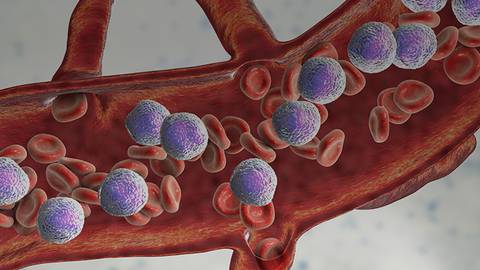Announcer:
Welcome to CME on ReachMD. This episode is part of our MinuteCME curriculum.
Prior to beginning the activity, please be sure to review the faculty and commercial support disclosure statements as well as the learning objectives.
After the production of this episode, the NCCN guidelines for B-Cell Lymphomas, Version 5. 2023 were updated on July 7, 2023.
Dr. Leonard:
This is CME on ReachMD, and I’m Dr. John Leonard from Weill Cornell Medicine and New York-Presbyterian Hospital in New York, and here with me today is my colleague, also here at Weill Cornell and New York-Presbyterian, Dr. Sarah Rutherford.
So we’ll start off with a question around the NCCN guidelines that’s the focus of this discussion. These have been updated in the beginning of 2023 [NCCN guidelines for B-Cell Lymphomas were updated again on July 7, 2023]. So, Dr. Rutherford, what changes are most clinically relevant for our audience to know about?
Dr. Rutherford:
There’s a notable change that in addition to R-CHOP as the preferred regimen for diffuse large B-cell lymphoma in stage 2 with extensive disease or stage 3 to 4 disease, we also now have another preferred regimen, which is polatuzumab vedotin plus R-CHP, and that is specifically in patients with IPI [International Prognostic Index] of 2 or greater, and this is based on the POLARIX trial, which was actually originally presented at the American Society of Hematology meeting back in 2021, which randomized patients with previously untreated diffuse large B-cell lymphoma who were 18 to 80 and IPI 2 to 5 with a performance status of 0 to 2 into 2 different groups – R-CHOP times 6 cycles every 21 days, as is standardly given, versus polatuzumab vedotin at 1.8 mg/kg plus R-CHP times 6 cycles every 21 days. I do want to note that in this regimen, there were 2 additional cycles of rituximab given at the end for a total of 8. And so actually in this trial, it was found that the 2-year progression-free survival of the polatuzumab-based regimen was higher than that of R-CHOP. It was a difference of about 6.5%, and so this is now a potential regimen to use in patients who are IPI 2 to 5, with newly diagnosed diffuse large B-cell lymphoma.
Dr. Leonard:
Yes. I think these are very interesting data, and I think it’s interesting that they’ve been included in the NCCN guidelines as we noted when we opened this discussion. Certainly, it is encouraging that there was a benefit with regard to the primary outcome of the study, and as we alluded to, this is really focused on issues around progression-free survival. And I think that that, in the setting of an overall positive study, this is quite encouraging, and I think really something that will potentially impact our practice as we approach these patients. The fact that there’s no overall survival benefit, I think, does give a little bit of pause, although, you know, it’s hard to know what’s behind that, and time will tell if that changes at all with additional follow-up. But I think if a patient had access to the drug, through whatever mechanism, I think that this would certainly be a regimen that one would consider because certainly patients would want to reduce the chance or lower the chance of relapsing and having a progression event, and the fact that the tolerability profile was quite similar between the 2 arms, perhaps a little bit more in the way of febrile neutropenia in the polatuzumab arm, being one, I would say, modest difference.
So overall, I think, as you alluded to, I think these are very interesting data and important data for people to think about in their practice. And obviously I know that many individuals in our audience follow the NCCN guidelines, and so the fact that these findings are listed there is obviously relevant, as you think about your patients.
So thank you very much. This has been a quite brief but, I think, great discussion of an important study. Our time is unfortunately now up, so thanks for listening.
Announcer:
You have been listening to CME on ReachMD. This activity is provided by Prova Education and is part of our MinuteCME curriculum.
To receive your free CME credit, or to download this activity, go to ReachMD.com/Prova. Thank you for listening.


 In support of improving patient care, Global Learning Collaborative (GLC) is jointly accredited by the Accreditation Council for Continuing Medical Education (ACCME), the Accreditation Council for Pharmacy Education (ACPE), and the American Nurses Credentialing Center (ANCC) to provide continuing education for the healthcare team.
In support of improving patient care, Global Learning Collaborative (GLC) is jointly accredited by the Accreditation Council for Continuing Medical Education (ACCME), the Accreditation Council for Pharmacy Education (ACPE), and the American Nurses Credentialing Center (ANCC) to provide continuing education for the healthcare team.






Facebook Comments